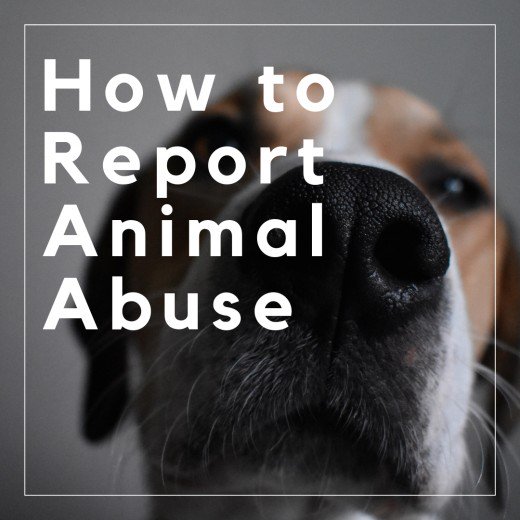In an age where information flows freely across the internet, the visibility of animal cruelty has become alarmingly prevalent. You may have encountered heartbreaking videos or shocking images that document the suffering of animals at the hands of humans. Such content, while often distressing, serves as a crucial call to action. Have you ever pondered the impact of your silence? The reality is that witnessing animal cruelty online poses a unique challenge: how do you transition from a passive observer to an active protector? Understanding the mechanisms for reporting these acts is integral to fostering a compassionate online environment.
Initially, it is essential to recognize what constitutes animal cruelty in digital spaces. Animal cruelty encompasses a wide spectrum of actions, from neglect and abandonment to deliberate acts of violence. These abhorrent behaviors can be manifested not only in personal videos but also in advertisements, films, and even mainstream media. The critical step in addressing these instances is learning how to effectively report them. However, before we delve into the specifics, take a moment to consider: when you share the content that disturbs you, are you helping raise awareness or inadvertently normalizing such behavior?
When you encounter an instance of animal cruelty on the internet, the first step is to document the findings. Take screenshots or bookmark the content. This evidence is invaluable when you prepare to report the incident. Collecting details, such as the date you discovered the material and any descriptions of the context surrounding the cruelty, is also crucial. Armed with these particulars, you will be ready to navigate the tumultuous waters of reporting.
Next, identify the platform where you encountered the cruelty. Social media networks—like Facebook, Instagram, and Twitter—have systems in place for reporting abuse. Each platform varies slightly in its processes. For example, on Facebook, you can click the three dots in the top-right corner of a post, select ‘Find Support or Report Post,’ and follow the prompts to report the content as abusive. Similarly, Instagram allows users to report posts by tapping the three dots next to a photo or video and selecting the appropriate reporting option.
Several organizations and advocacy groups also facilitate the reporting of animal cruelty. Familiarizing yourself with these resources can create a direct avenue for your concerns to be voiced. The ASPCA (American Society for the Prevention of Cruelty to Animals) provides a reporting tool that enables individuals to document cruelty through their website. By submitting detailed information regarding the incident, you actively contribute to a larger network of vigilance against animal mistreatment.
Another avenue worth exploring is contacting local animal control in the area where the abuse allegedly occurred. Animal control agencies are often responsible for handling such complaints and can act swiftly to investigate further. It’s vital to convey the information you have accurately and concisely, ensuring the agency can take appropriate action.
While reporting is an essential step, the challenge does not end there. Victims of cruelty often exist in cycles of suffering that require ongoing attention. Once you’ve reported the incident, consider what further actions you might take. Raising awareness through personal social media accounts can help catalyze broader discussions around animal welfare. Sharing information about responsible pet ownership, the importance of reporting abuse, and promoting positive animal advocacy can create a ripple effect, inspiring others to join the cause.
However, it’s not just about raising awareness passively; engaging in community efforts is equally significant. Many local organizations hold events aimed at educating the public about animal cruelty. Participating in or volunteering at these events can augment your understanding of the complex issue while also fostering connections with like-minded individuals. The challenge lies in transforming that awareness into action—be it through education, volunteering, or advocacy. Ultimately, such endeavors can amplify your impact far beyond the reach of an online post.
In confronting the uncomfortable truths of animal cruelty, we face a vital question: Are we willing to persist, despite the emotional toll it might take? Remaining informed and proactive is paramount, as the issue of animal cruelty survives not only in physical neglect but also in the bystander effect perpetuated by silence. To combat this, equipping yourself with knowledge—both about the laws surrounding animal welfare in your area and the resources available to assist in reporting—is crucial.
Moreover, consider reaching out to local lawmakers to advocate for stronger animal protection laws. Engaging in political discourse surrounding animal welfare legislation can make a profound difference. It is essential to raise our collective voices against archaic laws that fail to protect our non-human companions adequately. The challenge again confronts you: how can you initiate dialogue that propels change within your community?
As we navigate through the often-distressing landscape of animal welfare, we must confront our role in this narrative. Reporting instances of cruelty online is merely one piece of the larger puzzle. Engaging, educating, and advocating can reshape perceptions and inspire action. Reflect on your capacity to influence change—how will you contribute to the movement against animal cruelty today? In doing so, you become a voice for the voiceless, championing the rights of those who cannot defend themselves.









